
Sun, M87 Jet
Thursday, 28 April, I did another little project. I made an adapter for my Thousand Oaks Optical ETX "Solar II Type 2 Plus solar filter" to use the filter on my Nikon D7000 DSLR 70-300mm VR lens. This is the same filter I use on the Meade 8" LX200-ACF (with a mask). The adapter is just some cardboard that slides onto the lens sunshield. The filter then slides onto the adapter. Here are a couple of photos of the adapter, with the completed system seen at the top of the page.
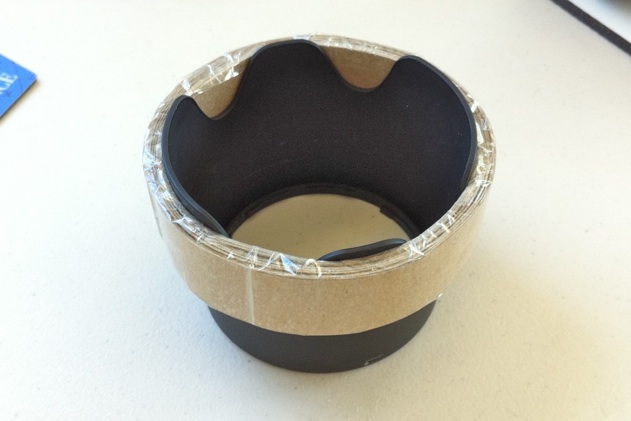
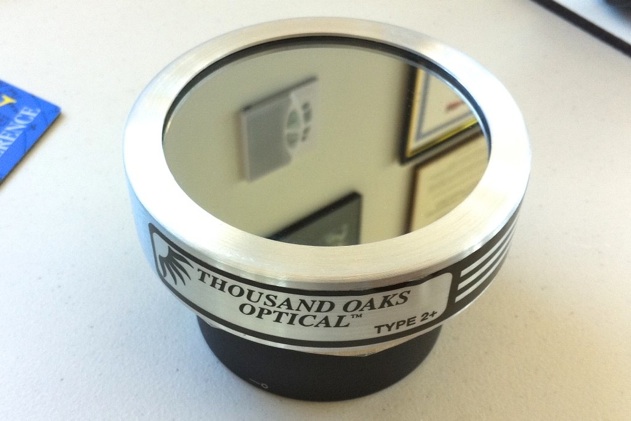
Auto-exposure doesn't work when photographing the sun through the filter, although auto-focusing does. I set the ISO to 100 and did several test exposures during the day on Thursday. The best image was at 1/500sec at a focal length of 300mm, f/5.6. Here is the image, unedited (top), and edited and cropped (bottom):
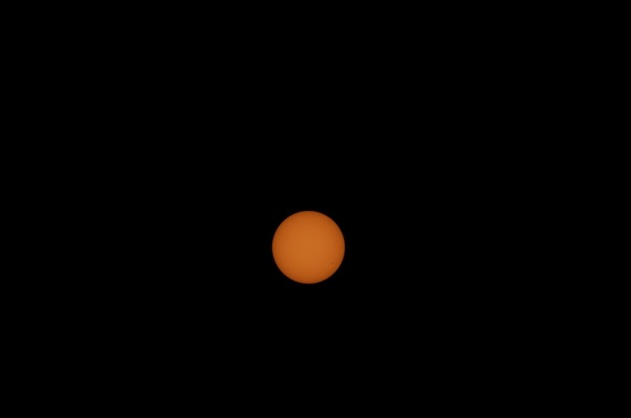
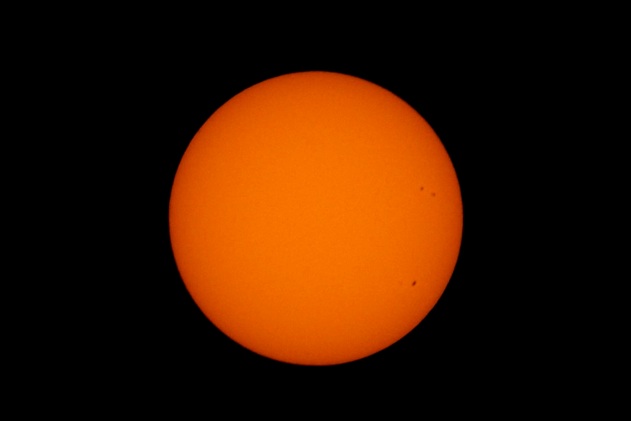
Three sunspots are visible along the right side of the sun in the cropped photo.
I have previously taken telephoto shots of the sun trough the filter but always had to hold the filter in front of the lens. Now I have an adapter to hold it for me. Don’t know why I hadn’t done this before now!
Both Clear Sky Chart and 7Timer! had forecast cloudy skies for Thursday night. However, as sunset approached, the sky was clear. There was some wind though. I opened the observatory at 1818 MST, 91°F. At 1832 MST, I powered up the telescope, did a focus on Sirius, and slewed to Saturn, which was just coming out of the tree to the southeast 30 minutes before sunset. Saturn was faintly visible in the 26mm eyepiece against the very bright blue sky. It was still visible in the 15mm eyepiece, albeit with very low contrast against the bright background.
I had some visitors come by the POD before sunset:


At 1856 MST, about 10 minutes before sunset, Saturn’s Ring System and some cloud bands were now clearly visible in the 15mm (133X) eyepiece against the still bright sky. As the sun set, seeing was excellent. Saturn was very crisp in the 9.7mm (206X) and 5.5mm (364X) eyepieces. At 1923 MST, the moon Titan become visible. At 1925 MST, I viewed the T Pyx recurrent nova; it was still bright.
I then began setting up for D7000 prime focus imaging of M87, a galaxy with a jet coming out of it from the central black hole. I used the Off-Axis Guider (OAG). At 1938 MST, I did a focus test image with the Bahtinov Mask using the star Arcturus. I then began waiting for twilight to end. At 2010 MST, M87 was now visible in the D7000 DSLR viewfinder, even though twilight was not yet quite over. At 2018 MST, I noticed that the Zodiacal Light was now visible in the western sky.
I began imaging M87 at 2030 MST. I took 30 1 minute, ISO 6400, unguided exposures. After every 5th exposure I checked the position of a reference star in the reticle eyepiece on the OAG, and made an adjustment if necessary. During post-processing I found 15 images that were good (i.e., no tracking errors). I stacked these with the Lynkeos imaging stacking application.
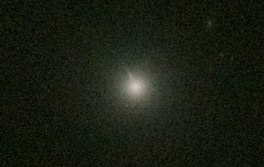
The image on the left is one of the single frame images, cropped but otherwise unedited.
The jet is clearly visible at 11 o’clock.
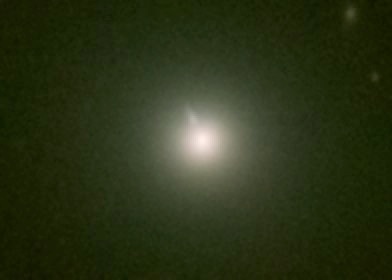
This image is a stack of 15 images, cropped, and upscaled 200%.
I plan to do some more imaging of M87 to enhance the jet.
I ended imaging at 2113 MST. At 2125 MST, I viewed Saturn in the 26mm (77X), 15mm (133X), 9.7mm (206X), and 5.5mm (364X) eyepieces. Three moons were now visible. Seeing was excellent so I decided to push the magnification. 5.5mm + 2X Barlow Lens (727X): good view. 9.7mm + 2X Barlow Lens (412X): excellent view. 9.7mm + 3X TeleXtender (619X): very nice view. 5.5mm + 3X TeleXtender (1091X): fuzzy but at times good view.
Closed the observatory at 2150 MST, 67°F.
Friday, April 29, 2011

